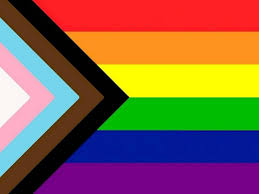June Pride

June 1, 2022
An Overview of Celebrating Pride (by Terry Holman)
In 1969, the Stonewall Uprising took place in Manhattan, New York. The Lesbian, Gay, Bisexual, Transgender, and Queer, or the LGBTQ month became an annual tradition not long after. At first, it was “Gay Pride Day” which was celebrated on the last Sunday in June. However, in many major cities, it grew into the entire month of June. Memorials, parades, picnics, parties, workshops, concerts, and many other kinds of events bring in millions of people together. To reflect on history, they celebrate the events that took place to fight for their equality. Supporting each other, they continue to talk about ways to fight for their justice and equality. This doesn’t stop there.
Many days throughout the year celebrate and signify different events and meanings. Nation Coming Out Day, Pronouns Day, a Day of Silence, and a Night of Noise are just a few days that are celebrated. (A further list will be provided). The first pride march was held on June 28th, 1970, as the one-year anniversary of the Stonewall Uprising. Since then, the month has grown into a national celebration, inspiring and holding hundreds of different events. Millions of people group together to fight to make our world a safer place to live and be one’s self.
Stonewall Uprising (By Toby McGroary)
The 1960s, as well as the decades that came before them, were not good times for LGBTQ+ individuals. They were heavily stigmatized and acts that could pinpoint you as a part of that community, such as simply existing as a gay or trans person, had been made illegal for a long time. Because of this, many queer people flocked to secret illegal gay bars that were, for the most part, run by the mafia. Of course, this led to most of them being raided by police forces, and queer people having to go into the custody of law enforcement. Stonewall Inn, at the time, was one of the few if not the only gay nightclubs that still allowed acts that would have been deemed illegal by law enforcement, such as same-sex dancing, drag queen performances, and “cross-dressing”. (Which was more like allowing gender non-conforming and trans individuals to exist as their truest selves.)
The riot started in the early hours of June 28th, 1969. It took the entire club by surprise. The police entered with a warrant, and after roughing up some patrons and discovering illegal alcohol, arrested 13 people. Instead of dispersing from the scene completely, many people stayed outside of the bar, outraged at what was happening. At one point, an officer hit a patron over the head while forcing her into a police van, and that’s the catalyst that sparked it all. Most historical accounts credit either Marsha P. Johnson, a black trans woman, as being the person to throw the first “brick” (mostly pennies and shot glasses, and other small items were being tossed at police) at Stonewall. Others say it was Sylvia Rivera, another LGBTQ+ woman of color. However, most credit has to be given to the previously mentioned patron that was pushed into the police van. Her name was Stormé DeLarverie, and she was a mixed-race butch lesbian. As she was being forced into custody, she shouted into the crowd, “Aren’t you going to do something?” and that’s what sparked the outburst.
After the initial riot, there were protests for days in the city after that, some including hundreds if not thousands of people. It was a call to justice, and the Stonewall riots & the protests thereafter were a huge landmark in queer history. In fact, it wouldn’t be far off to say that we wouldn’t be in the same place with LGBT+ rights today without them.
